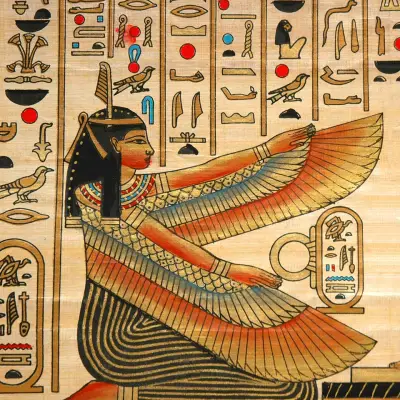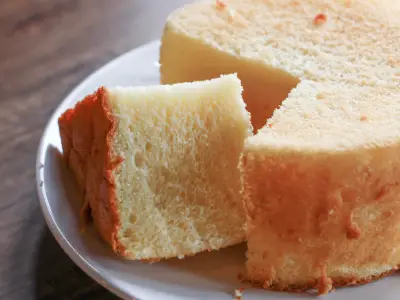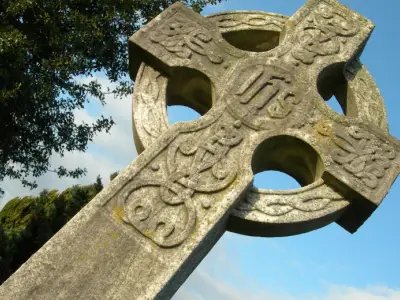Greek mythology continues to enchant people all over the world with the powerful symbols woven through its myths. These symbols weren’t just part of decoration or artwork; they captured the essence of gods, emotions, and events that shaped ancient Greek beliefs.
Whether you’re intrigued by ancient culture, looking for Greek mythology symbol tattoo ideas, or simply want to explore the hidden meanings behind iconic emblems, this guide shares some of the most recognisable and meaningful symbols in Greek mythology.
Jump to:
- The Thunderbolt – Zeus’ Power and Authority
- The Owl – Wisdom and Strategic Thinking
- The Trident – Rule Over the Seas
- The Laurel Wreath – Honour, Glory, and Victory
- The Cornucopia – Fertility, Abundance, and Nourishment
- The Caduceus – Communication, Commerce, and Balance
- The Aegis – Divine Protection and Fearsome Power
- The Labrys – Duality and Feminine Power
- The Snake – Healing, Rebirth, and Hidden Wisdom
- The Evil Eye – Warding Off Misfortune
- The Olive Tree – Peace, Wisdom, and Longevity
- The Helmet and Spear – Warfare and Discipline
- The Gorgoneion – Protection Through Fear
- The Phoenix – Rebirth and Immortality
- The Lyre – Harmony and Creative Power
- The Torch – Illumination and Guidance
- The Chariot – Celestial Movement and Divine Control
- What Are the 12 Greek Gods’ Symbols?
- Study Our Greek Mythology Diploma for £29
Recommended for you!
Best Sellers1. The Thunderbolt – Zeus’ Power and Authority

The thunderbolt is perhaps the most iconic symbol of all, representing Zeus, the king of the gods. Forged by the Cyclopes, this powerful weapon was a tool of divine justice and control over the skies.
The thunderbolt symbolises raw, unmatched power. Zeus used the thunderbolt to assert his rule, enforce law, and protect both the gods and mortals from chaos. For ancient Greeks, the thunderbolt was a reminder that no one was above the will of the gods.
2. The Owl – Wisdom and Strategic Thinking
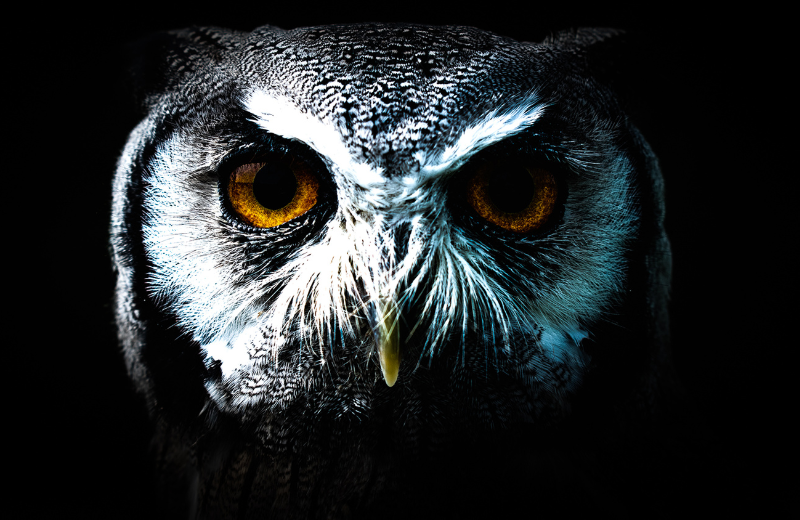
The owl, sacred to Athena, the goddess of wisdom and war strategy, is one of the most well-known symbols of the Greek goddess. It stood for intelligence, insight, and clarity of thought.
In ancient Athens, the owl featured prominently on coins and was considered a guardian of the city. It was a respected symbol in Greek mythology, representing a sharp mind and wise judgment. People today still associate owls with knowledge, and many see them as a symbol of lifelong learning.
3. The Trident – Rule Over the Seas
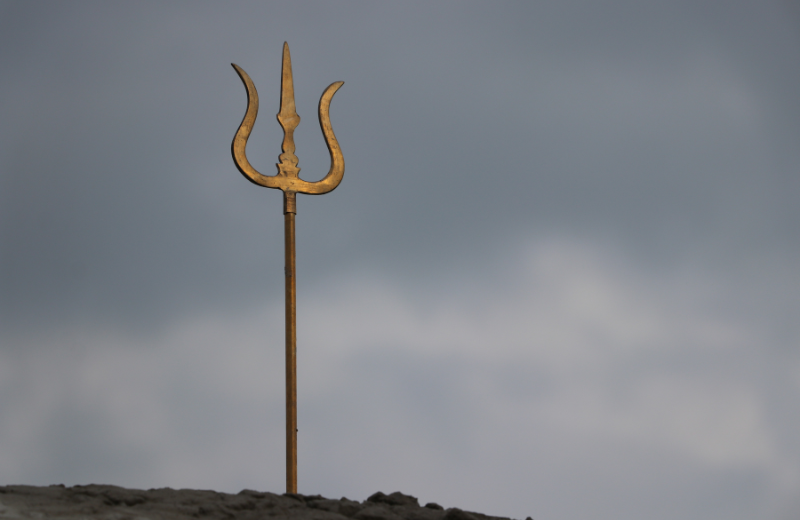
The trident is one of the most recognisable symbols of the Greek god Poseidon, representing his dominion over the ocean and its creatures. The three-pronged spear had the power to stir storms, create springs, and shake the earth.
In mythology, Poseidon was both feared and worshipped, and his trident symbolised his volatile nature. For seafarers and fishermen in ancient Greece, the trident was a symbol of protection and a guarantee of safe passage. This Greek symbol is also a popular choice for tattoos, representing strength and resilience.
4. The Laurel Wreath – Honour, Glory, and Victory
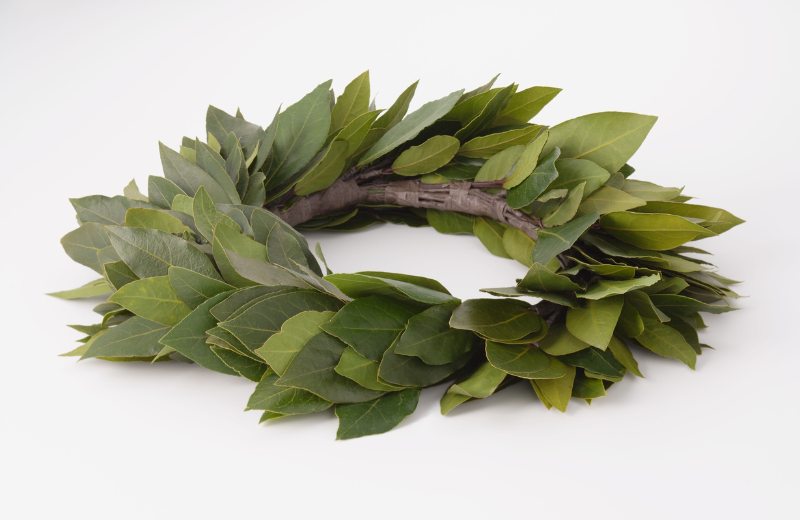
The laurel wreath, associated with Apollo, was given to champions of athletic, poetic, and military contests. It symbolised success and honour earned through effort and excellence.
Apollo created the laurel wreath after the nymph Daphne, whom he loved, transformed into a laurel tree. In memory, he made the laurel sacred. In ancient Greek symbolism, this wreath represented achievement without violence, emphasising intellectual over physical victory. It continues to be used today in academic and cultural contexts.
5. The Cornucopia – Fertility, Abundance, and Nourishment

This ancient Greek symbol reminded people of nature’s generosity and the importance of gratitude for what the earth provides. The cornucopia’s imagery still surfaces during harvest festivals and is seen as a symbol of good fortune and prosperity.
6. The Caduceus – Communication, Commerce, and Balance

The caduceus, a staff entwined by two snakes and topped with wings, is linked to Hermes, the messenger god. It’s a Greek symbol for god-like swiftness, diplomacy, and the flow of information.
Although often mistaken for a medical symbol, the caduceus actually represented trade, communication, and balance. In ancient Greek symbolism, it carried the idea of resolving conflict and achieving harmony, something especially important for merchants and travellers.
7. The Aegis – Divine Protection and Fearsome Power
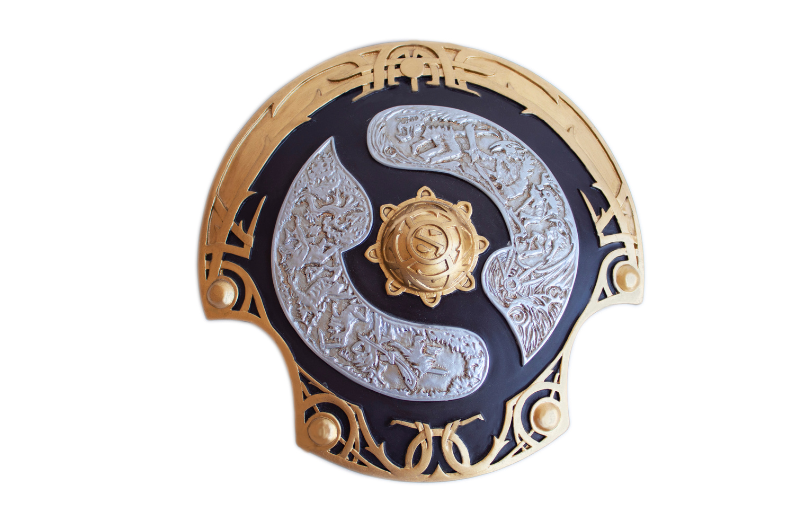
The aegis was a protective cloak or shield often carried by Zeus and Athena. It was sometimes said to be adorned with the head of Medusa and to radiate fear to enemies.
In Greek mythology, it was both a symbol of protection and a display of terrifying power. When Athena wore it into battle, it was said to give her the upper hand before a single weapon was raised. It represents divine favour and the assurance of being guarded by something far greater than yourself.
8. The Labrys – Duality and Feminine Power
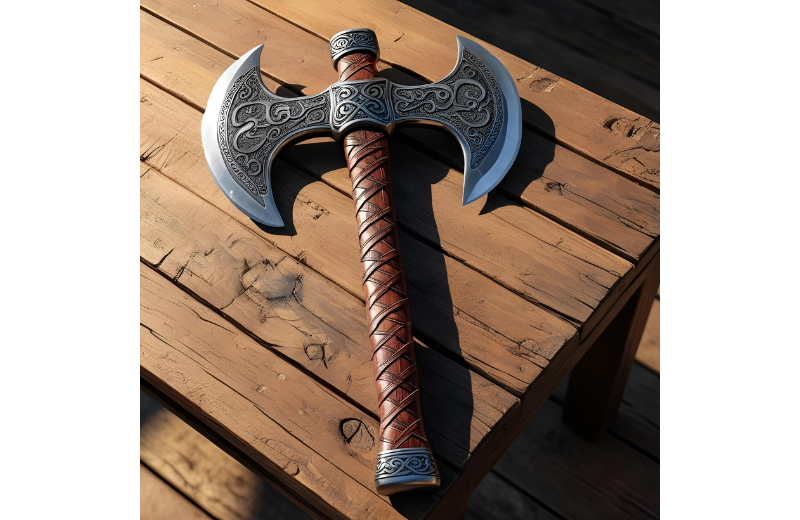
The labrys, or double-headed axe, has roots in Minoan culture but appears in Greek mythology as a sacred and ceremonial symbol. It’s linked to goddesses and priestesses, making it a striking symbol of female strength.
It was used in rituals rather than warfare and symbolised unity, duality, and spiritual authority. In modern times, it has become a symbol of feminism, justice, and inner strength, often featured in Greek symbol tattoos to reflect empowerment.
9. The Snake – Healing, Rebirth, and Hidden Wisdom

Snakes were common in Greek myth, often seen with Asclepius, the god of medicine. His staff, entwined with a single serpent, remains the true Greek symbol for healing.
The snake’s ability to shed its skin made it a potent sign of transformation and renewal. As part of ancient Greek symbolism, snakes represented hidden knowledge, the cycle of life and death, and the power to rejuvenate. They are still viewed today as mystical, protective creatures.
10. The Evil Eye – Warding Off Misfortune

The evil eye in Greece is believed to protect against envy and harmful intentions. The ancient Greeks thought excessive admiration or praise could attract bad luck, so they used this eye symbol to shield themselves.
Found in jewellery, ceramics, and home décor, it’s one of the most widespread symbols in Greek tradition. The blue-and-white design remains popular worldwide as a symbol of spiritual protection and good fortune.
11. The Olive Tree – Peace, Wisdom, and Longevity
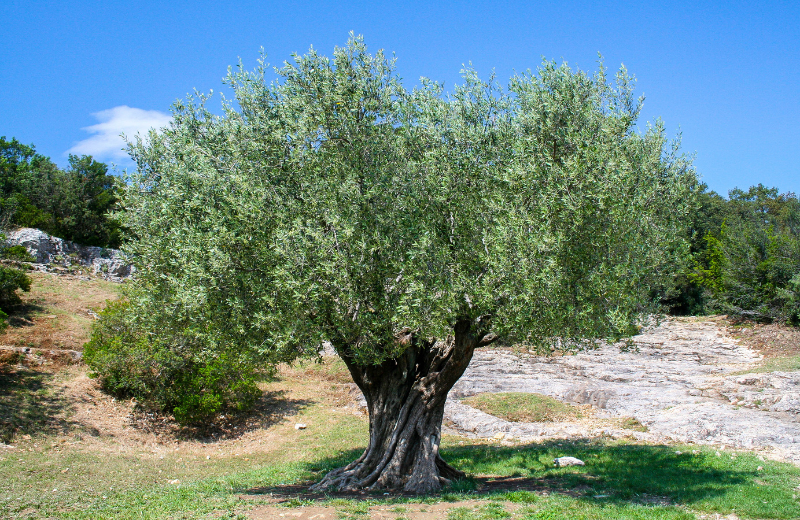
Athena’s gift to the city of Athens, the olive tree, became a powerful Greek symbol of life and peace. It also provided sustenance, oil, and shelter, making it essential to Greek survival and prosperity.
Olive branches were used to crown champions and to settle disputes, becoming a long-standing symbol of ancient Greece. Even today, extending an “olive branch” means offering peace. The tree stands as a symbol of endurance, generosity, and calm strength.
12. The Helmet and Spear – Warfare and Discipline
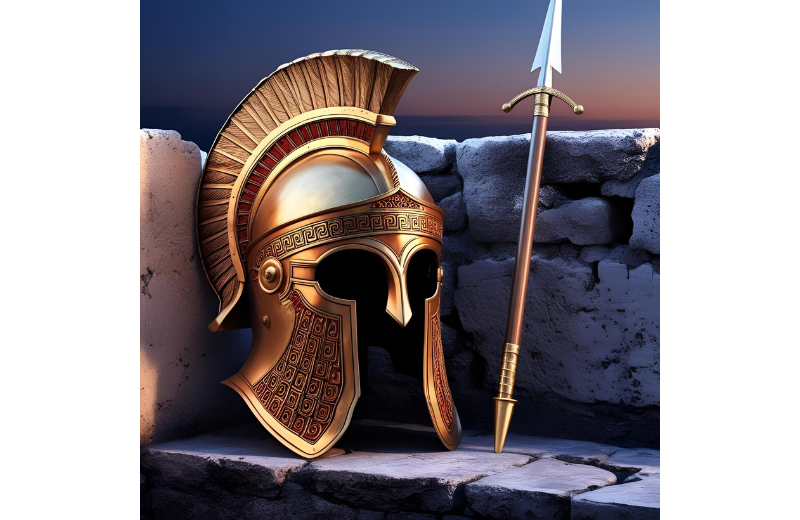
These weapons symbolised different kinds of strength, depending on the deity. For Ares, the god of war, the spear and helmet represented raw aggression. For Athena, they stood for discipline, strategy, and wisdom in battle.
These Greek symbols of war offer more than just violent imagery; they reflect courage, responsibility, and the mental sharpness needed to lead or defend. They remain powerful symbols for those who value honour, duty, and bravery.
13. The Gorgoneion – Protection Through Fear
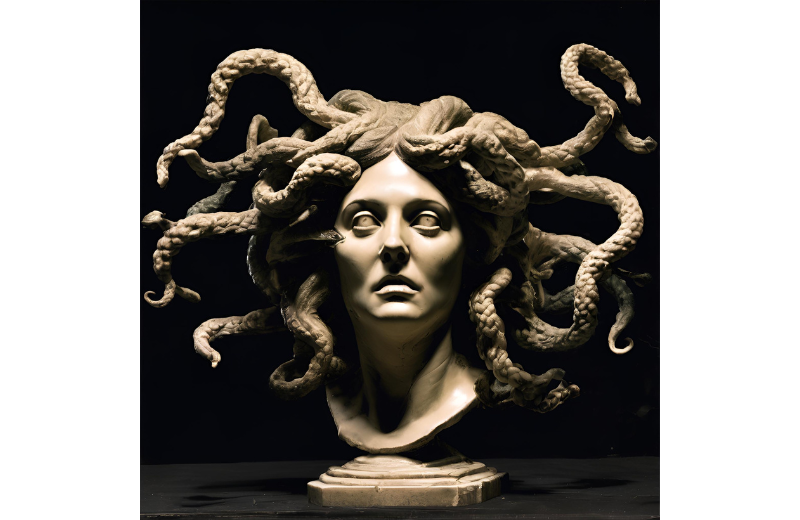
The Gorgoneion is a powerful image of Medusa’s head, often depicted with wide eyes, fangs, and snakes for hair. It was commonly used on shields, breastplates, doorways, and temples in ancient Greece as a way to frighten off evil.
More than just a terrifying face, the Gorgoneion served as a symbol of protection, using fear itself as a defence. It reminded both mortals and enemies that divine power could defend as fiercely as it could punish. It blended fear, beauty, and spiritual safeguarding into one unforgettable image.
14. The Phoenix – Rebirth and Immortality
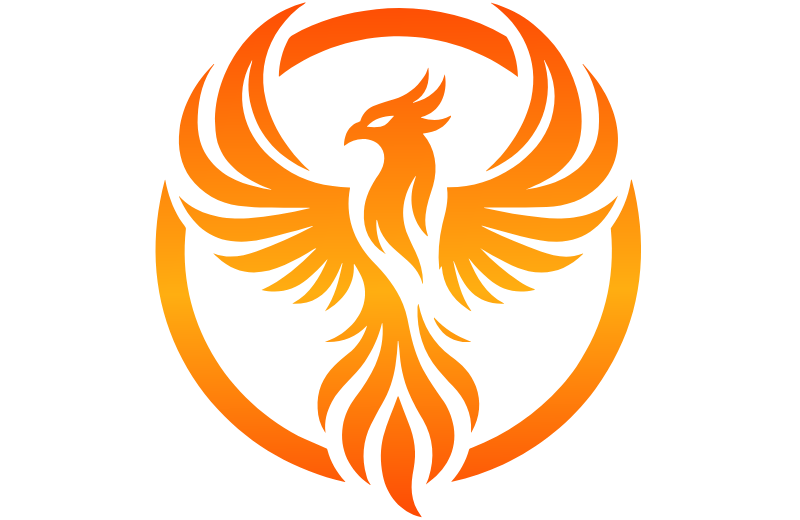
The phoenix is a legendary bird that bursts into flames upon death, only to rise anew from its ashes. Although its mythological roots span several cultures, the phoenix holds a strong place in Greek mythology.
It symbolised regeneration, renewal, and immortality, making it perfect for anyone seeking to embrace a fresh start or undergo personal transformation. For the ancient Greeks, the phoenix also served as a Greek symbol of life, reminding them that even endings are beginnings in disguise.
15. The Lyre – Harmony and Creative Power

The lyre, a stringed instrument similar to a small harp, was closely associated with Apollo, the god of music, poetry, and prophecy. It symbolised artistic inspiration, musical harmony, and the power of sound to soothe or uplift.
In Greek symbolism, the lyre represented the order and rhythm of the universe. It was believed that the gods used its sound to bring balance to the world, making it an ideal symbol for Greek gods connected to creativity and knowledge.
16. The Torch – Illumination and Guidance

Often seen in the hands of Hecate, the goddess of magic and crossroads, the torch symbolised light in the darkness, both literally and metaphorically. It represented wisdom, spiritual guidance, and the revelation of hidden truths.
As one of the more mystical ancient Greek symbols, the torch was used in rites, ceremonies, and festivals to light the way for souls or travellers. It remains a powerful symbol for personal clarity and spiritual awakening.
17. The Chariot – Celestial Movement and Divine Control

Linked to both Helios and Apollo, who were said to drive the sun across the sky in golden chariots, this symbol represented power, movement, and cosmic order.
The chariot was a visual representation of the gods’ influence over time, nature, and the heavens. In Greek mythology, it stands for speed, divine purpose, and the unstoppable force of progress.
What Are the 12 Greek Gods’ Symbols?
Here’s a simple breakdown of the original Olympian gods and their most recognised symbols:
- Zeus – thunderbolt, eagle, oak tree
- Hera – peacock, pomegranate, sceptre
- Poseidon – trident, horse, dolphin
- Demeter – wheat, torch, cornucopia
- Athena – owl, olive tree, helmet
- Apollo – lyre, sun, laurel wreath
- Artemis – bow and arrow, moon, deer
- Ares – spear, boar, helmet
- Aphrodite – dove, seashell, rose
- Hephaestus – anvil, hammer, fire
- Hermes – caduceus, winged sandals
- Dionysus – grapevine, thyrsus, leopard
These symbols of the Greek gods and goddesses were not random—they told stories, conveyed roles, and shaped how people worshipped.
Recommended for you!
Best SellersStudy Our Greek Mythology Diploma for £29
If you’re ready to explore these symbols more deeply, the Greek Mythology Diploma Course at Centre of Excellence offers a fascinating journey into mythology, symbolism, and ancient beliefs. Perfect for beginners or mythology fans, the course explores gods, goddesses, creatures, and symbols in Greek mythology in rich detail. Enrol today for the discounted price of just £29!




